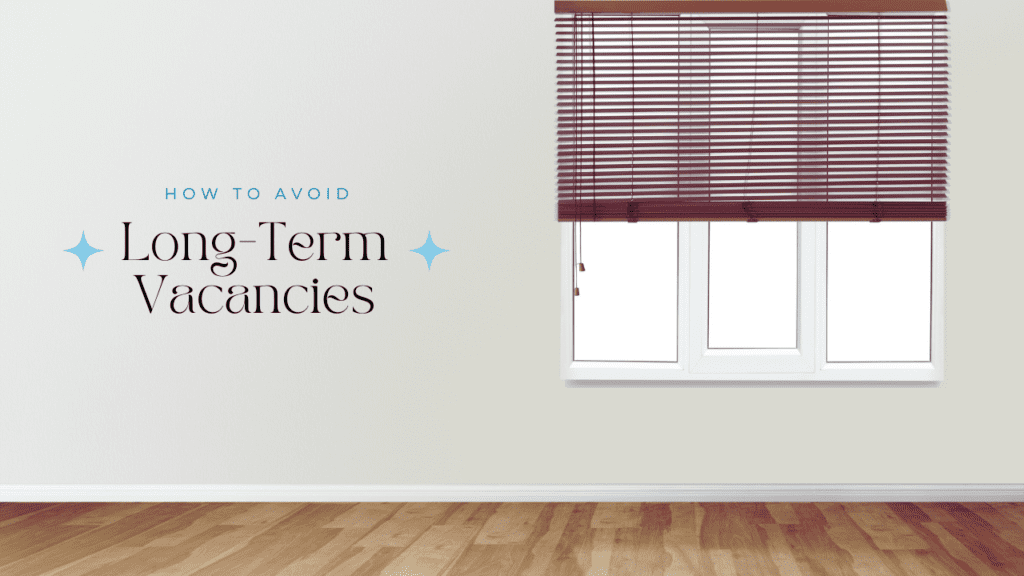
Vacancy is one of the fastest ways to lose money with your San Diego rental property. Earning consistent rental income and increasing the long term returns you earn on your investment require an occupied rental.
Vacant properties are also vulnerable properties. They can be more attractive to criminals, vandals, and squatters who may see an opportunity. You might find, after a long vacancy, that appliances have been stolen from your rental home or windows have been broken and people have broken in.
How can you avoid long term vacancies in your San Diego rental property? As San Diego property managers who work hard to avoid those expensive episodes, we have some ideas.
Price Your Property Competitively
Proper pricing will be one of your best defenses when it comes to avoiding vacancy. Tenants looking for their next rental home are educated on the rental market and what properties are going for, and those well-qualified tenants who you are hoping to attract to your property understand that they have a lot of choices. Don’t price yourself out of finding the best possible tenant.
This does not mean you should undervalue your rental home. Pricing the property too low comes with its own risks. You’re leaving money on the table when your price is too low, and you’ll find it’s difficult to bring your rents up to market rates, especially if your investment is subject to rent control laws.
You don’t have to price it too low.
But, you don’t want to price it too high, either, especially when you’re trying to avoid a long vacancy period. Higher prices lead to longer vacancies, and it’s usually not worth it for you to hold out for a higher rental value if it means leaving your property unoccupied for an extra few weeks or even an extra month. You lose a lot more income that way.
The answer?
Conducting a comparative rental analysis. You need to take a look at what similar homes are renting for in your specific area of San Diego. Pricing is hyper-local, so make sure when you’re looking at similar properties and comparing prices, you’re looking zip code to zip code and neighborhood to neighborhood. It’s not uncommon for rental values to be dramatically different from one side of the street to the next.
Here’s what you’ll consider in your pricing and when you’re reviewing your rental analysis:
- Location. Tenants are willing to pay more for desirable locations. If your investment property is near good schools and close to parks, shopping centers, restaurants, and grocery stores, you’ll be able to earn more than you would if your property is more remote or stuck in a heavily commercial or industrial area.
- Size and layout. If you’re renting out a single-family home with three bedrooms and two bathrooms, you’ll likely have a lot of homes to compare it to. If you have a unique layout for your property or it’s particularly small or large, it might be difficult to find comparable. Keep this in mind. You cannot use rental comps from single-family homes in suburban neighborhoods if you’re renting out a loft on the beach. Not only do locations not match, the square footage and the target tenants are not the same.
- Days on market. You might find a lot of homes similar to yours with around the same list price, but they’re not renting quickly. This might indicate you need to price your home just a bit lower than the average rental price so you can be sure you’ll get it rented quickly.
When it comes to pricing, the best thing you can do is access reliable, accurate data. This will usually come from a San Diego property manager. Get to know the market rents and think about how you might have to price your property a little bit higher or a little bit lower, depending on what it has to offer.
Provide an Attractive San Diego Rental Home
Modern, attractive, and well-maintained homes do not stay vacant long, especially when they’re priced competitively. When you’re pretty sure that you have an accurate rental price set, the next step in avoiding vacancy is making sure you are offering a home that good tenants will want to rent.
Start with curb appeal. Does the home look attractive from the street or the sidewalk? Is the lawn mowed and well-landscaped? Is the exterior paint in good condition? These are the things prospective tenants will evaluate before they even decide to tour the inside.
The curb appeal counts because it serves as the first impression tenants will have of your property.
Inside, there needs to be a sense of welcoming and warmth. Don’t begin marketing or showing the home until it’s ready for occupancy. Make sure that everything is fixed and maintained. If something isn’t working, tenants will have a hard time wanting to rent the home. You don’t want to be leading prospective residents through the home during a showing, promising that things will be fixed before they move in. Fix those things before you show the home.
Beyond maintenance, think about making some updates and upgrades. If your kitchen appliances are 25 years old, that might be why your property remains vacant. Some of the updates and improvements to consider are:
- Replacing aging and deteriorating appliances. Choose energy-efficient models that match.
- Applying fresh paint to the walls. Instead of touching up spaces, do a full coat of paint. It looks better and lasts longer.
- Installing better lighting. Choose LED bulbs for maximum energy efficiency. This works indoors and outdoors.
- Evaluate your carpet. Is it time for new carpet, or maybe even hard surface flooring? That will be more attractive to tenants because it’s easier to clean and maintain.
These improvements may help you avoid a longer vacancy. They’ll also help you increase your rental value.
Strategic Marketing Limits Vacancy Time
How is your marketing strategy?
Even in a market that’s moving quickly, you need to be on top of your marketing game. This is what moves rental homes. Prospective tenants are looking at a lot of properties; you need to make sure that your listing stands out. Keep in mind that they’re likely scrolling on their phones, which means you need to have photos and descriptions that are mobile-friendly.
A good marketing strategy starts with outstanding photos. You need to grab your tenants’ attention and give them a reason to keep looking through your listing. They’ll view the photos before they read the description or the rental terms.
Rental property marketing photos need to be voluminous. Take pictures of everything, from the front of the property to any outdoor space. Show off the kitchen, the bathrooms, and all common areas like family rooms and dens.
Don’t forget to show off special features that make your property unique. If you have a recently remodeled kitchen, for example, take a lot of specific pictures of the counters, the appliances, the backsplash, the floors – whatever stands out. If there’s a garden tub in the owner’s suite, you’ll want to include a picture of that. Photograph closets and balconies and yards.
With the photos, you’ll need a concise and descriptive narrative of why tenants should be interested in your property. Talk about the neighborhood, list the number of square feet, provide information on the numbers of bedrooms and bathrooms.
Don’t forget the rental amount. Don’t forget to mention whether pets are considered. Don’t forget to include your contact information.
Share your listing on all the popular rental websites. Post it on social media sites.
Focus on Tenant Retention
Retaining tenants is an excellent way to eliminate long vacancy times. When you have a resident in place who pays rent on time, takes care of your property, and communicates openly and proactively with you, it’s a good idea to hold onto that resident and to inspire a lease renewal.
Tenant retention saves you money. It helps you avoid those long term vacancies. It also provides stability for your investment.
What can you do to ensure you’re likely to retain your tenants?
- Provide a great rental experience. Be responsive when it comes to maintenance and treat your residents with respect. You don’t want to give them a reason to leave.
- Provide ease and convenience whenever possible. Allow for online or electronic rent payments. Collect maintenance requests online. Have air filters delivered on a regular schedule so they remember to change them.
- Keep your rental increase reasonable. Most tenants expect that rents will go up when they renew their lease agreement. Pay attention to the market so you know what to expect when you propose a new rent. You want to raise them high enough that you can cover any increased expenses and protect your ROI, but you want to keep those tenants in place, too, and an increase that’s too high will only chase them away and give them a reason to move.
 These are some of our best tips to avoiding a long term vacancy. If you’d like some help with this part of the rental process, please contact us at Chase Pacific Property Management & Real Estate Services. We’d be happy to serve as your San Diego property management resource.
These are some of our best tips to avoiding a long term vacancy. If you’d like some help with this part of the rental process, please contact us at Chase Pacific Property Management & Real Estate Services. We’d be happy to serve as your San Diego property management resource.
